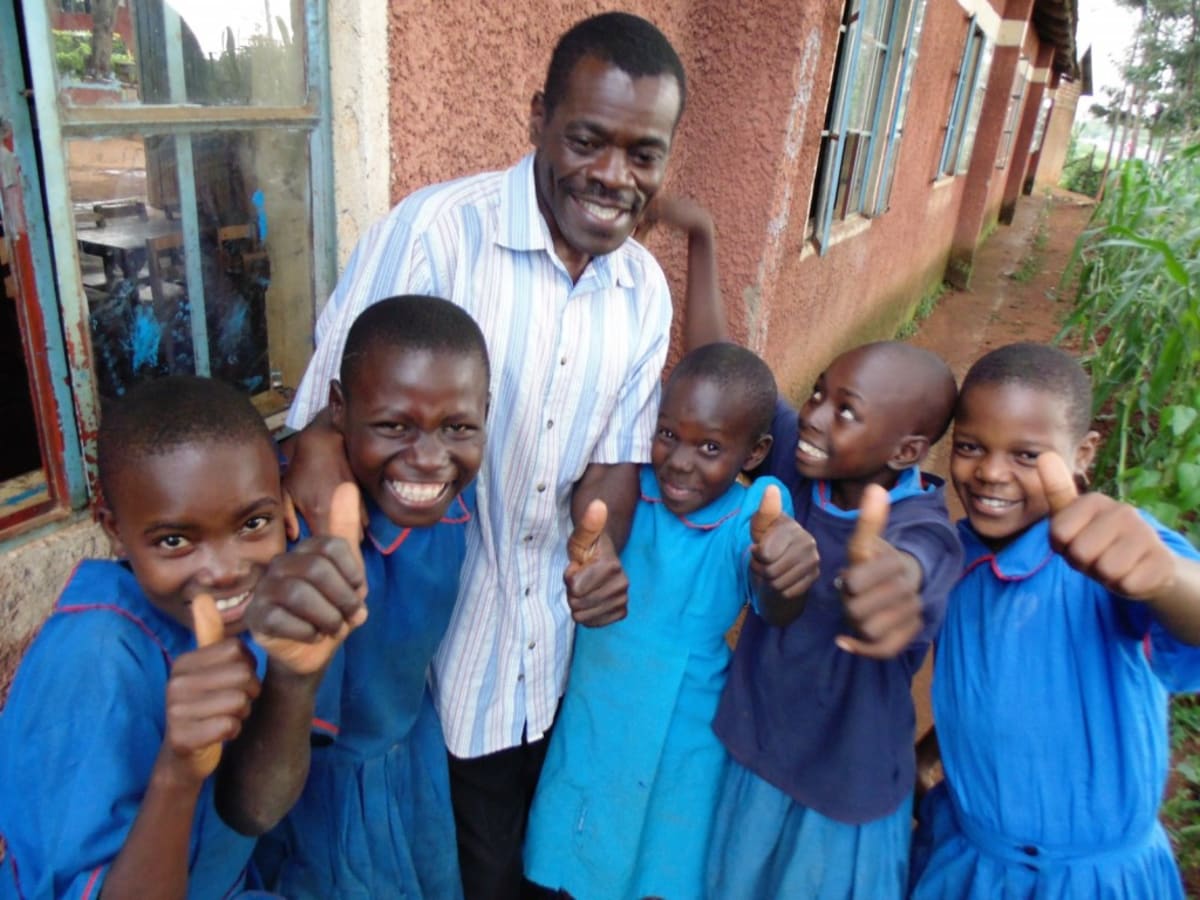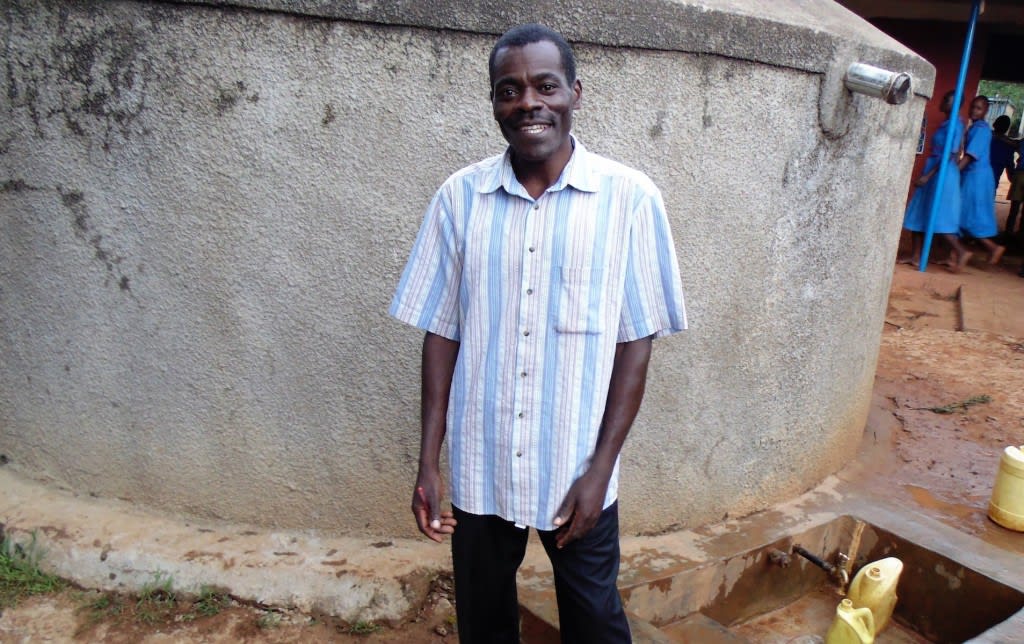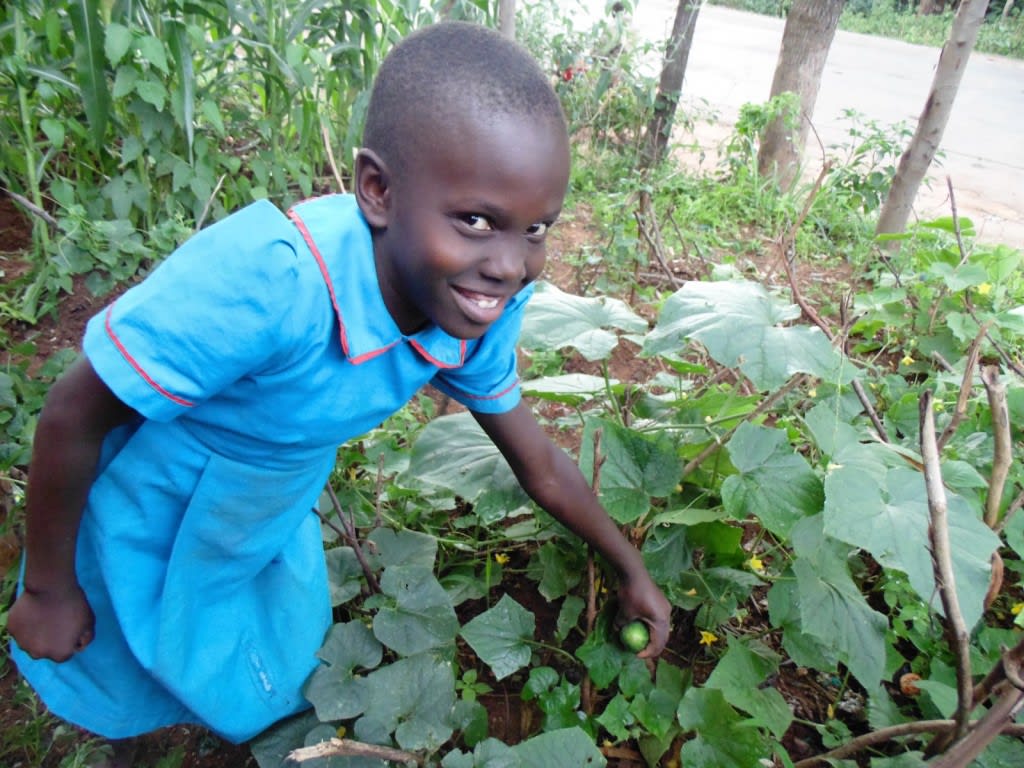This project is a part of our shared program with Western Water And Sanitation Forum (WEWASAFO). Our team is pleased to directly share the below report (edited for clarity, as needed).
Background Information
Emusutswi Primary School is a public mixed day primary school located in Emusutswi Village, Ebukhunza sub-location, Ebusamia location, North East Emuhaya ward, Emuhaya sub-county, Vihiga County. It was started by the Church of God Faithful in 1976, firstly to accelerate the spread of Christian faith in the community and secondly to help the pupils who had to walk long distances to the neighboring Kilingili to the North, Ilungu to the West, and Mwituha to the South in search of education. The school was officially adopted by the Government of Kenya in 1983 and has ever since been overseen by the state.
The primary section of the school has a total population of 495 pupils, 250 boys and 245 girls. There is also an early education section that has 54 boys and 60 girls. The total number of teachers in the school is 14, plus one PTA teacher. There are also three support staff under the school’s employ, two security guards and one cook. This gives the school a total population of 626.
The Current Source
The school only has a 1000-liter plastic tank which the pupils fill daily with water from a protected spring, 1 km away, for school use. This means that class either starts late or is interrupted when there is a need for more water, causing a lot of learning time to be wasted in search of this precious resource. The quality of water brought back by pupils is often questionable, especially during the rainy season when pools of water are easily found by the roadside. Some pupils would rather fetch this than walk a kilometer away to the spring.
Sanitation Situation
The total number of VIP latrines in the school is 23, 8 of which are full and thus unusable. This leaves 15 latrines still in use, shared as follows: two for teachers, six for girls and seven for boys. Comparing the population with the World Health Organization standard of 25 girls per door and 30 boys per door, the school is still in great need. Furthermore, these latrines are never cleaned with water because the supply is so limited in the school. The floors are often flooded with urine and are constantly smelly, which is a threat to the pupils’ health.
The school only has one hand-washing facility which is solely used by teachers. The students have nowhere to wash their hands after visiting the latrine! Early education students are thus forced to use a single basin in which each child dips their hands before meals. As the water is used more and more, germs are transferred to all other pupils later in line.
Solution
Parents, students, and staff will be trained for two days on attitudes about hygiene and sanitation and its practices. The training facilitator plans to use PHAST (Participatory Hygiene and Sanitation Transformation), CLTS (Child-Led Total Sanitation), ABCD (Asset-Based Community Development), CTC (Child-to-Child), group discussions, handouts, and demonstrations. CLTS and CTC will be invaluable as they encourage child leaders' critical role in leading and promoting positive change in their communities. This training will also result in the formation of a CTC club that will be charged with overseeing and maintaining the sanitation facilities on campus.
As for construction, a 30,000-liter rainwater catchment tank will be constructed with locally available materials. The community will be involved during the project by mobilizing materials, and providing accommodation and food for the construction team. Once the school has this tank, rainwater will be an invaluable replacement to the spring which is located 1 km away. Six new VIP latrines will be built, three for each gender. Since there are no hand-washing stations available for students, two 250-liter plastic will be delivered and fitted with taps. The CTC club mentioned above will make sure these are filled and that soap is available each morning.
Project Solution: Training
Training was held at the school compound after confirming a convenient date with the head teacher. Participants were drawn from different student grades, teachers, and parents, along with members of the Emusutswi Primary School Management Board. In total, there were 19 participants, all who were actively involved throughout sessions. Not only did parents help supervise the students, but learned a lot of valuable health information they can apply in their own homes.
CTC training sessions included the following topics:
- Primary healthcare
- Forming a CTC club and its roles
- Child rights
- Operation and maintenance of the rainwater catchment tank
- Maintenance of the VIP latrines
The facilitator used presentations, brainstorming exercises, group discussions, and demonstrations to enforce the above topics. The facilitator and organization consider this training a success; it was evident that all participants were eager to know more about plans to sustain a CTC club. The teachers and parents also pledged to create a conducive environment for CTC activities and proper hygiene and sanitation practices. Students were excited to leave and share their new knowledge with peers. According to 10-year-old student Blessline Amakobe, "This training has really helped me know how to wash my hands properly and I am going to show others too. Am glad that I can promote health using poems and even music!''
VIP Latrines
Construction of two triple-door VIP latrines is complete and are now in use. The pupils testify that the additional latrines are cleaner and easier to use, without the bad smell and urine or dirty floors previously experienced. Now students, especially the barefooted ones, don’t fear going to the latrines. Thanks to the availability of the water tank, the latrines can be maintained and cleaned regularly. This has greatly eased pressure and has allowed the school to permanently close the latrine pits that are full.
Hand-Washing Stations
Two hand-washing stations were delivered and installed, and are now in use by students. Because of the pupils’ training on proper procedures for hand washing, both boys and girls alike are happy to wash hands and demonstrate their knowledge for others. Before this, there were no hand-washing facilities in the school, but now the pupils are observing good hygiene practices and no longer fear contaminating the food they eat.
Rainwater Catchment Tank
Construction for this 30,000-liter rainwater catchment tank began on January 1st. The process began with site clearance, setting and casting the foundational slab, construction of the wall, roofing, and installation of fittings such as delivery pipes, vent pipes, and screens. Finally, good drainage was ensured.
The community provided many materials that were used to build the structure, such as bricks, sand, hardcore, ballast, sugar sacks, and poles. The school also made sure that the construction team was taken care of well, providing both meals and accommodation.
After the artisans completed construction and declared the tank and the VIP latrines ready for use, and with the installation of hand-washing facilities complete, the facilities were handed over to the beneficiaries in the presence of pupils, school, head teacher, and Management Board members.
Cases of waterborne diseases such as typhoid, cholera and diarrhea that were initially reported as a result of drinking contaminated water are expected to dramatically decrease. The pupils, teachers and parents are very happy because much of the time that was initially wasted to draw water from the nearby spring will now be spent for quality learning in the classroom. Teachers will no longer have to worry about pupils bringing contaminated water collected from puddles in an attempt to avoid walking all the way to the spring. As a result, academic performance in the school is expected to improve, and cases of absenteeism resulting from water-related diseases will decrease. This is because clean, safe water will be available and easily accessible within the school compound.
Mr. Tom Amukhuma, a member of the school board, was very appreciative of the project... Especially the water tank! He couldn't hide his excitement when saying, ''With this tank you have really helped our school! The pupils will now not need to have classes interrupted to go fetch water, thereby turning their attention to learning and improving performance. Thank you and your donors very much!''

 Rainwater Catchment
Rainwater Catchment
 Rehabilitation Project
Rehabilitation Project

























